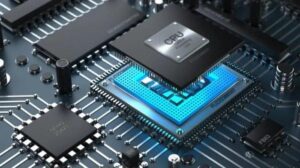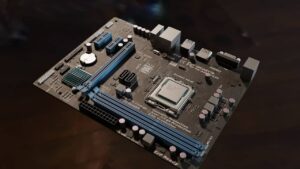
Maximising Your Connections: Understanding the Limits of How Many USB Devices Can be Connected to Your Computer
Do you have too much stuff to connect to your computer but never enough USB ports? It can be frustrating when your devices won’t fit because there’s no room at the inn.
But before you buy an extra mouse (or worse, another computer!) do yourself a favour and understand the limits of USB connection on your device first.
In this blog, we’ll look at USB connection types and discuss what the optimal number of devices are for each one. We will also learn how to add in more connections with a few simple steps.
When it comes to connecting devices to your computer, USB ports are an essential component that provides a convenient and versatile way to link up everything from keyboards and mice to external hard drives and webcams. You might be curious about how many USB devices can actually be connected to your computer at once without affecting the speed or even harming your system, given the growing number of USB-enabled devices on the market. In this blog, we’ll explore the limits of USB connectivity and how to maximise your connections for optimal usage.
USB Ports and Versions
Any device must have ports for the Universal Serial Bus (USB). They enable the linking of numerous external devices, including keyboards, mice, printers, scanners, and more. Chargers for cell phones, tablets, and other mobile devices can also be plugged into USB ports. There are various USB port versions, and each version offers a distinct rate of data transfer. The earliest USB connections, versions 1.0 and 1.1, support data transfers at up to 12Mbps. Modern laptops are more likely to have USB 2.0 ports, which offer transfer rates of up to 480Mbps. USB 3.0 ports are the newest and fastest version of USB ports, allowing transfer speeds of up to 5Gbps.
USB Hubs
Multiple USB devices can be linked to a single USB port on a computer using USB hubs. They can be powered or unpowered and come in a variety of shapes, sizes, and patterns. Unpowered USB hubs depend on the power provided by the computer’s USB port, whereas powered USB hubs have their own power source and can power connected devices.
People who need to connect numerous devices to their computers but do not have enough USB ports may find USB hubs to be especially helpful. Additionally, they offer a practical method of connecting and disconnecting devices without continuously unplugging and replugging cords from the computer’s USB ports. Additionally, USB hubs can assist in clearing up the mess of cables on your workstation or workspace, making it cleaner and better organised. The use of a USB hub, especially if several high-bandwidth devices are connected to it at once, can, however, have an impact on how well-connected devices work.
USB Power Limitations
The power restrictions of the USB ports should be taken into account when using numerous USB devices with a computer. The maximum power output from USB ports is usually 500 mA (milliamperes) at 5 volts. This means that if you use numerous USB-powered devices, such as smartphones or external hard drives, the overall power draw can easily increase and go over the USB port’s maximum capacity.
Others may have a Y-shaped USB cable with two connectors to simultaneously draw power from two USB ports, while some USB devices may have an external power source that can be plugged into a power outlet to avoid power issues. It might occasionally be required to use a powered USB hub with its own power source to ensure that all connected devices have enough power.
USB Bandwidth Limitations
The bandwidth of the USB host controller is shared by all USB devices attached to a computer. This implies that the bandwidth is split more widely as more devices are connected, which may lead to slower data transfer rates for each device. When transferring large quantities of data, such as when copying files from an external hard drive or downloading large files from a USB flash drive, USB bandwidth limitations can be especially obvious.
USB bandwidth can also be affected by the type of USB port and cable being used. In addition, some USB devices may require more bandwidth than others, such high-speed external hard drives or video capture devices. It’s important to consider these factors when connecting multiple USB devices to ensure that each device is able to function properly and at optimal speeds.
USB Device Limitations
It is important to note the limit of USB devices that can be connected to a computer at a single time. The precise limit will rely on a number of variables, such as the kind and quantity of USB ports on the computer, the kind of USB devices being used, and the bandwidth and power of the USB connection that are available.
USB 2.0 has the capability to allow 127 devices to be connected in a chain, whereas USB 3.0 and 3.1 each can allow 127 devices. But it’s crucial to remember that overloading a USB port with devices can reduce data transmission rates or even cause connectivity problems.
Further limiting the number of devices that can be linked at once is the fact that some USB devices, like webcams and external hard drives, demand more power and bandwidth than others. It is also crucial to keep in mind that connecting an excessive number of powerful USB devices to a computer can overload the USB controller, possibly harming the computer or the devices that are attached.
Conclusion
In order to avoid system overload and potential device damage, it’s crucial to comprehend the restrictions attached to connecting multiple USB devices to your computer. The maximum number of USB devices that can be connected to a computer relies on a variety of elements, including the type and quantity of USB ports, how USB hubs are used, device and bandwidth constraints, and power limitations. You can enhance the functionality of your computer and guarantee the best connection by keeping these factors in mind and managing USB devices correctly.

